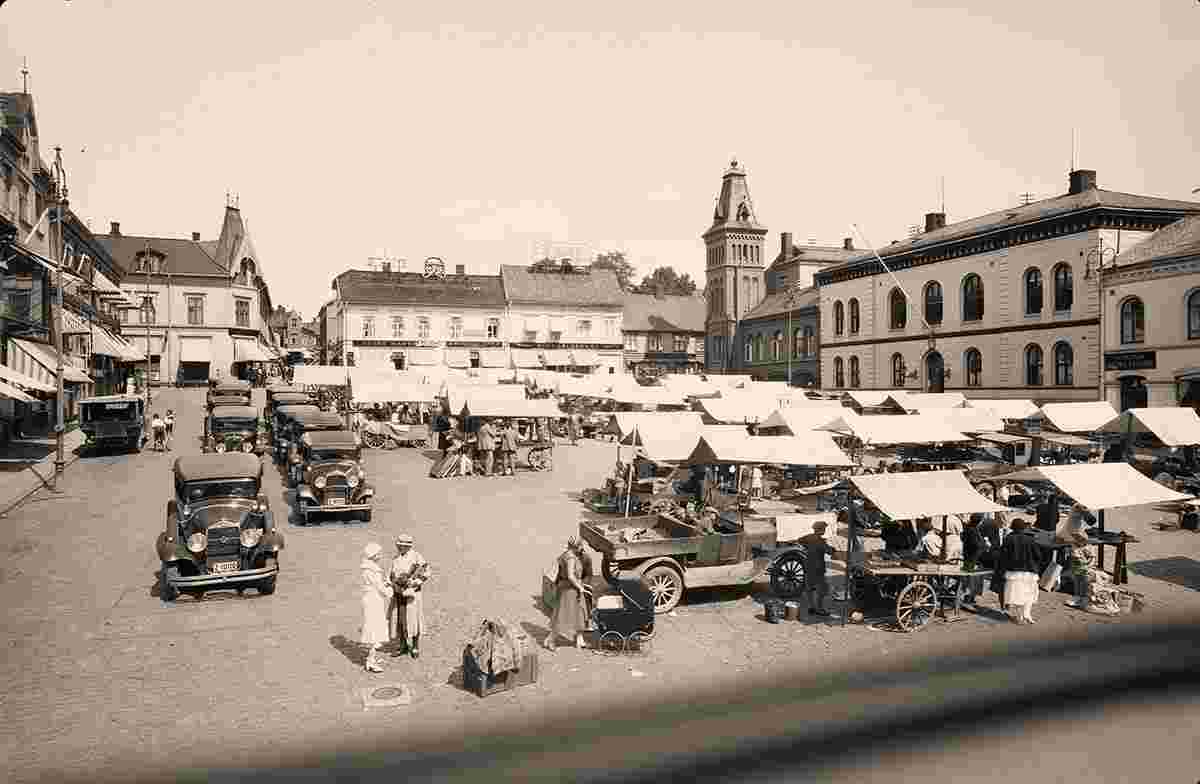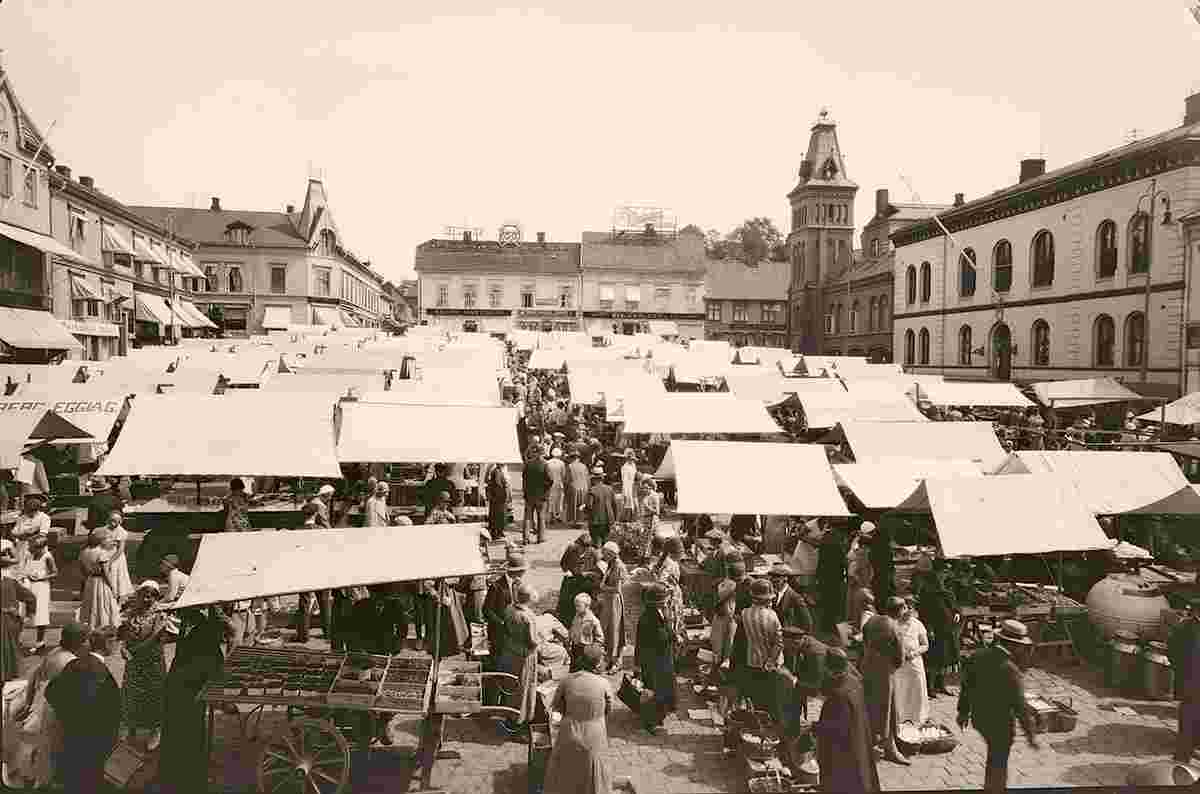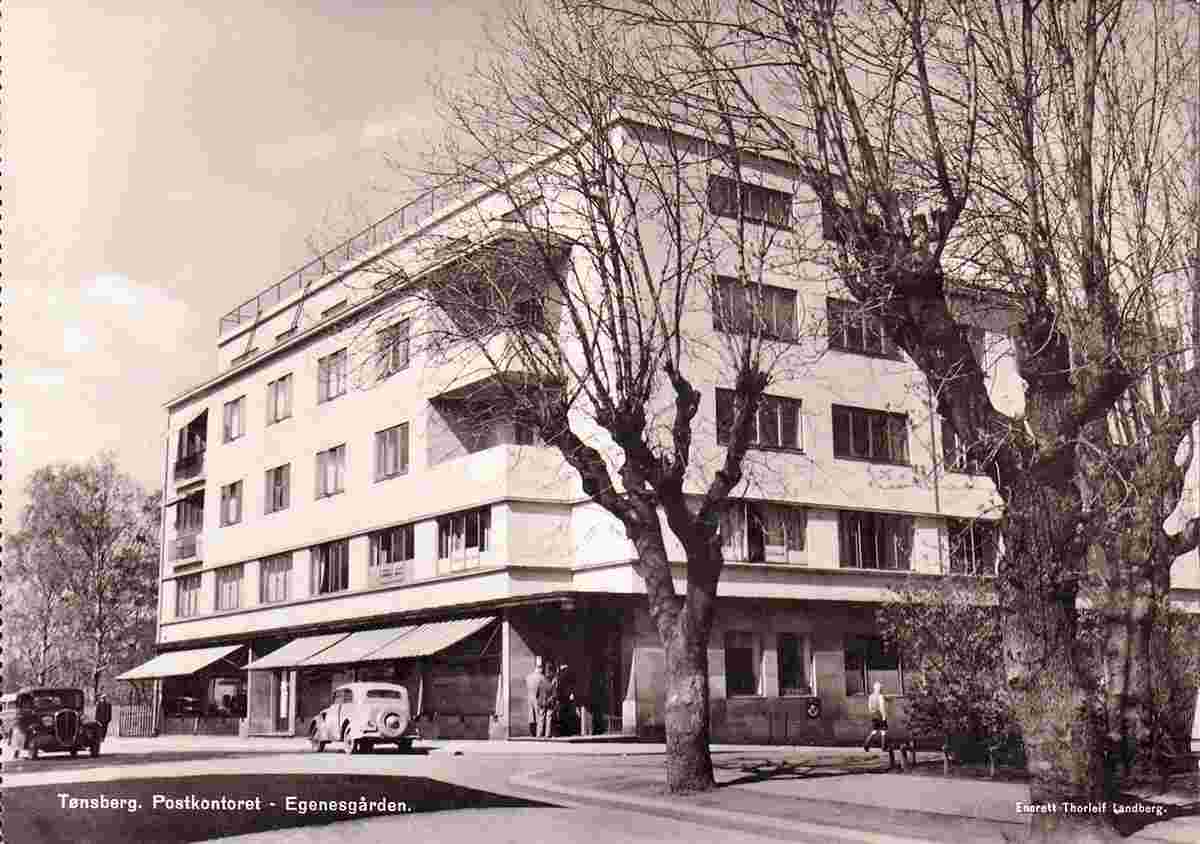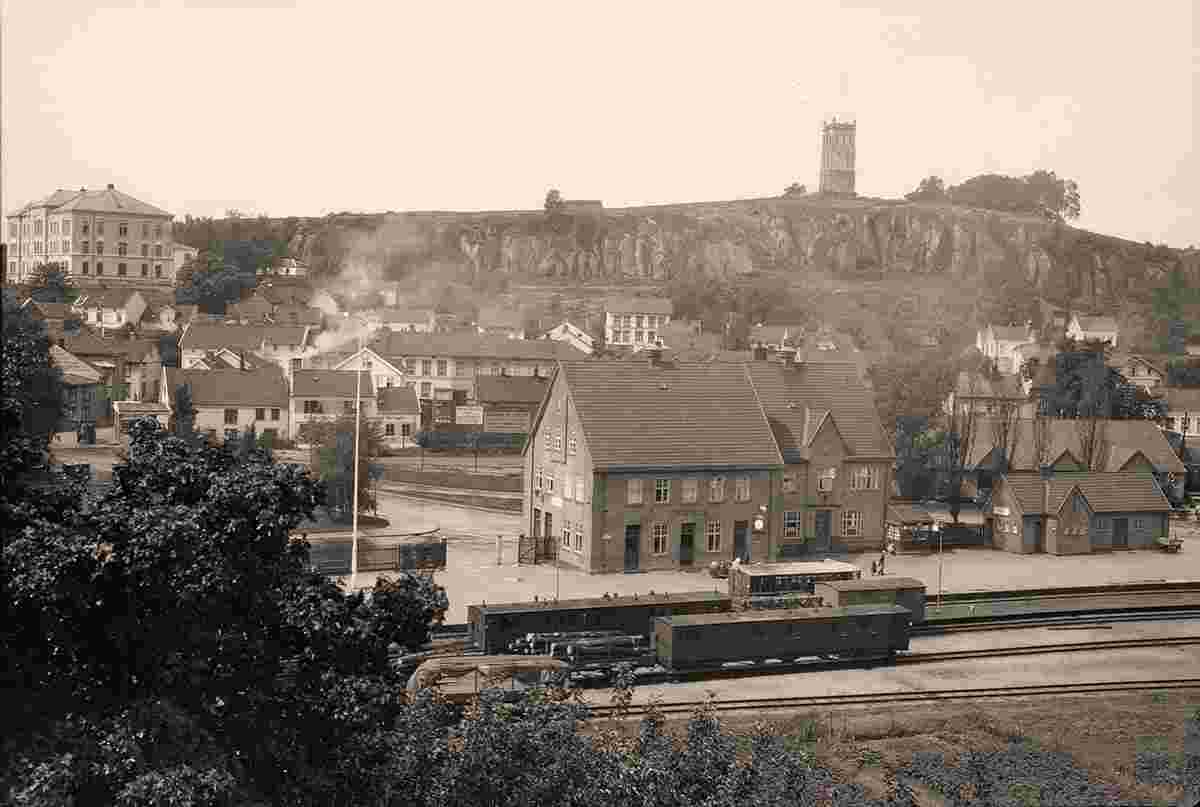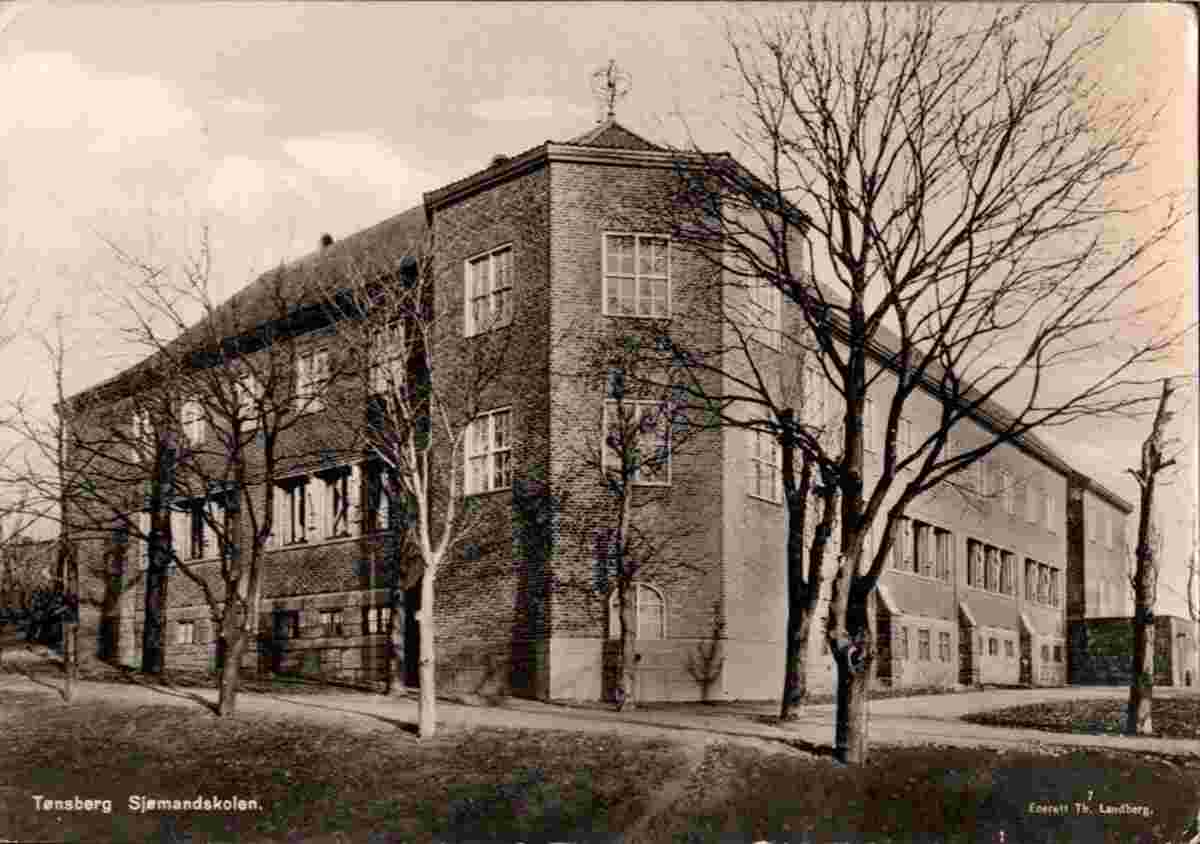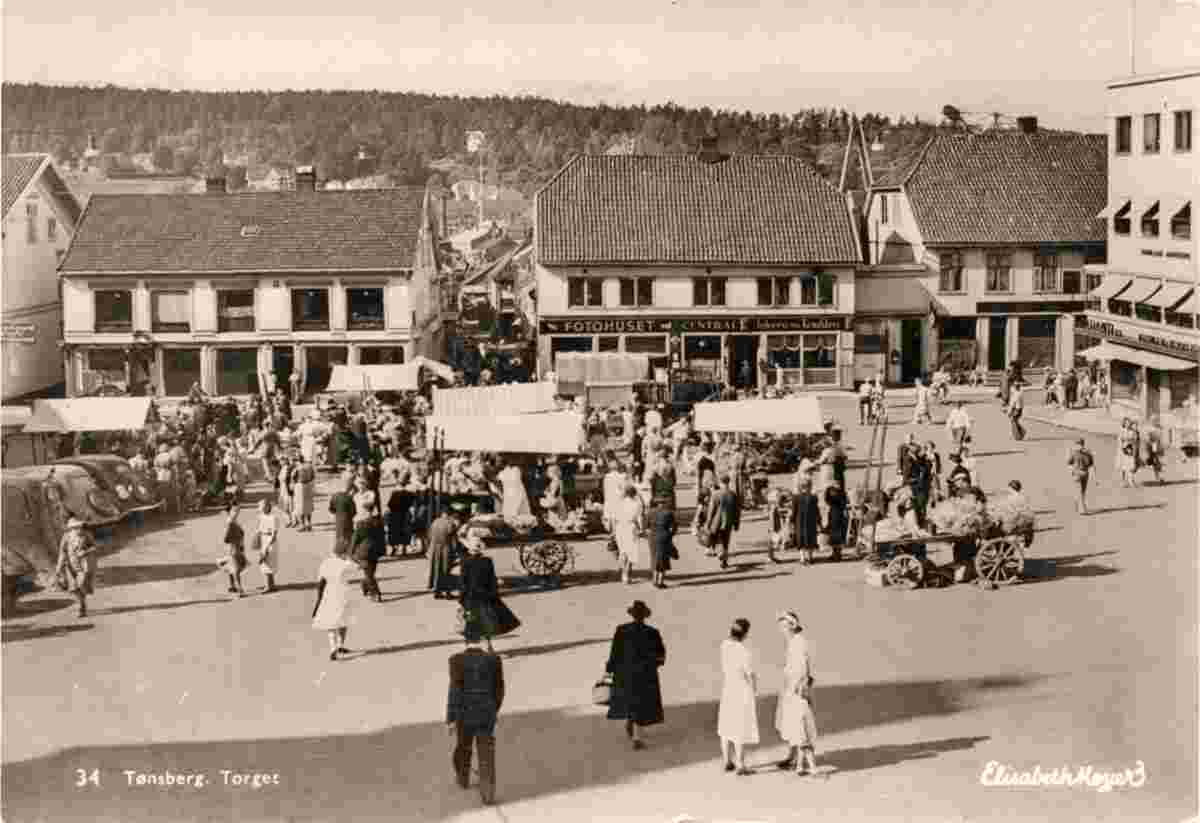Historical and old photos of Tønsberg, Vestfold and Telemark
HistoryViking ageTønsberg is the oldest city in Norway, founded by Harald Fairhair in the 9th century. It was also an ancient capital of Norway. The first time the town was mentioned by a contemporary writer was in 1130. According to Snorri Sturluson, Tønsberg was founded before the Battle of Hafrsfjord, which, according to Snorri, took place in 871. What year the battle took place is disputed, however, and most current historians believe the battle took place closer to 900. However, if the battle did in fact take place in 871, this would make Tønsberg one of the oldest present Scandinavian city. It was based upon this that the city's 1000 years jubilee was celebrated in 1871, and 1100 years jubilee in 1971. The archaeological excavations conducted in 1987–88 underneath the monastery ruins revealed several Viking graves which have served to confirm the earlier age of the original settlement. The king or his ombudsman resided in the old Royal Court at Sæheimr, today the Jarlsberg Manor (Jarlsberg Hovedgård), and on the farm Haugar, (from the Old Norse word haugr meaning hill or burial mound), which can be assumed to have been Tønsberg's birthplace. Haugar became the seat for the Haugating, the Thing for Vestfold and Norway's second most important place for the proclamation of kings. The site had probably been named after two Viking Era mounds, which tradition links to two sons of King Harald I, Olaf Haraldsson Geirstadalf, who was king in Vestfold og Telemark, and his half-brother, Sigrød Haraldsson, king of Trondheim. Both are presumed to have fallen in battle at Haugar against their half-brother Eric Bloodaxe and to have been buried on the same spot. Slottsfjellet (Castle Mountain), north of the city centre, made for a near impregnable natural fortress. During the civil war era of the 12th century, it was fortified by the Baglers. The Birkebeiners besieged it for 20 weeks in the winter of 1201 before the Baglers surrendered. In the 13th century, King Haakon Haakonson set up a castle in Tønsberg, Tønsberg Fortress. The town was destroyed by fire in 1536, but Tønsberg remained one of the most important harbour towns in Norway. Whaling epochThe center of the world's modern whaling industry was concentrated in Tønsberg and neighboring Sandefjord. Tønsberg along with neighboring Sandefjord and Larvik were dominant whaling towns in Norway. While whalers from Sandefjord established the first whaling station in the Faroe Islands, whalers from Tønsberg initiated whaling in Iceland and the Hebrides. During the 1850s, Tønsberg turned into a base of operation and source of expertise for whalers in the Arctic- and Antarctic Oceans. Tønsberg has been called “the cradle of modern whaling. In the 1892 publication “Handbook for Travellers in Norway” by John Murray, Tønsberg is described as “the centre of the Norwegian whaling and sealing industries in the Arctic Ocean.” The first whaling ventures to Antarctica was led by engineer Henrik Henriksen of Tønsberg. Henrik Johan Bull was another famous whaler from the district, famous for his expeditions to Antarctica. Bull traveled from Australia to Tønsberg in order to learn from local whaler Svend Foyn, who is recognized as the pioneer of the modern whaling industry. One of the city's most prominent residents, Svend Foyn, was a pioneer who embarked on an 1847 expedition to the Arctic, which led to a catch of 6,000 seals. Soon Tønsberg Harbor was home to a large fleet of sealing vessels, and the sealing industry grew further after the 1849 repeal of Britain's Navigation Acts. The hunters turned the seals to near extinction in the Arctic Ocean, and therefore turned to Bottle-nosed whales during the 1870s. Norway maintained a monopoly on European whaling until 1883, first and foremost due to Svend Foyn's patent rights to whaling techniques and inventions. Over-hunting in the Arctic eventually drove the whalers to Antarctica. By the beginning of the 20th century, Tønsberg had lost its preeminence in the whaling industry to the neighboring city of Sandefjord. Sandefjord, which lies just south of Tønsberg, later became known as the world's whaling capital. World War IIDuring the German occupation of Norway in World War II, the Berg concentration camp was constructed near Tønsberg. In 1948, Tønsberg became the cathedral city of the Diocese of Tunsberg (Tunsberg bispedømme), created when the counties of Buskerud and Vestfold og Telemark were separated from the Diocese of Oslo. Origin: en.wikipedia.org | ||||||||||||
 |
Historical and old photos of Tønsberg, Vestfold and Telemark
Historiske og gamle bilder av Tønsberg, Vestfold og Telemark |
| Main page • Countries of Europa • Cities of Norway |
| Robinson Rd, CB 13862 Nassau, NP, The Bahamas |

